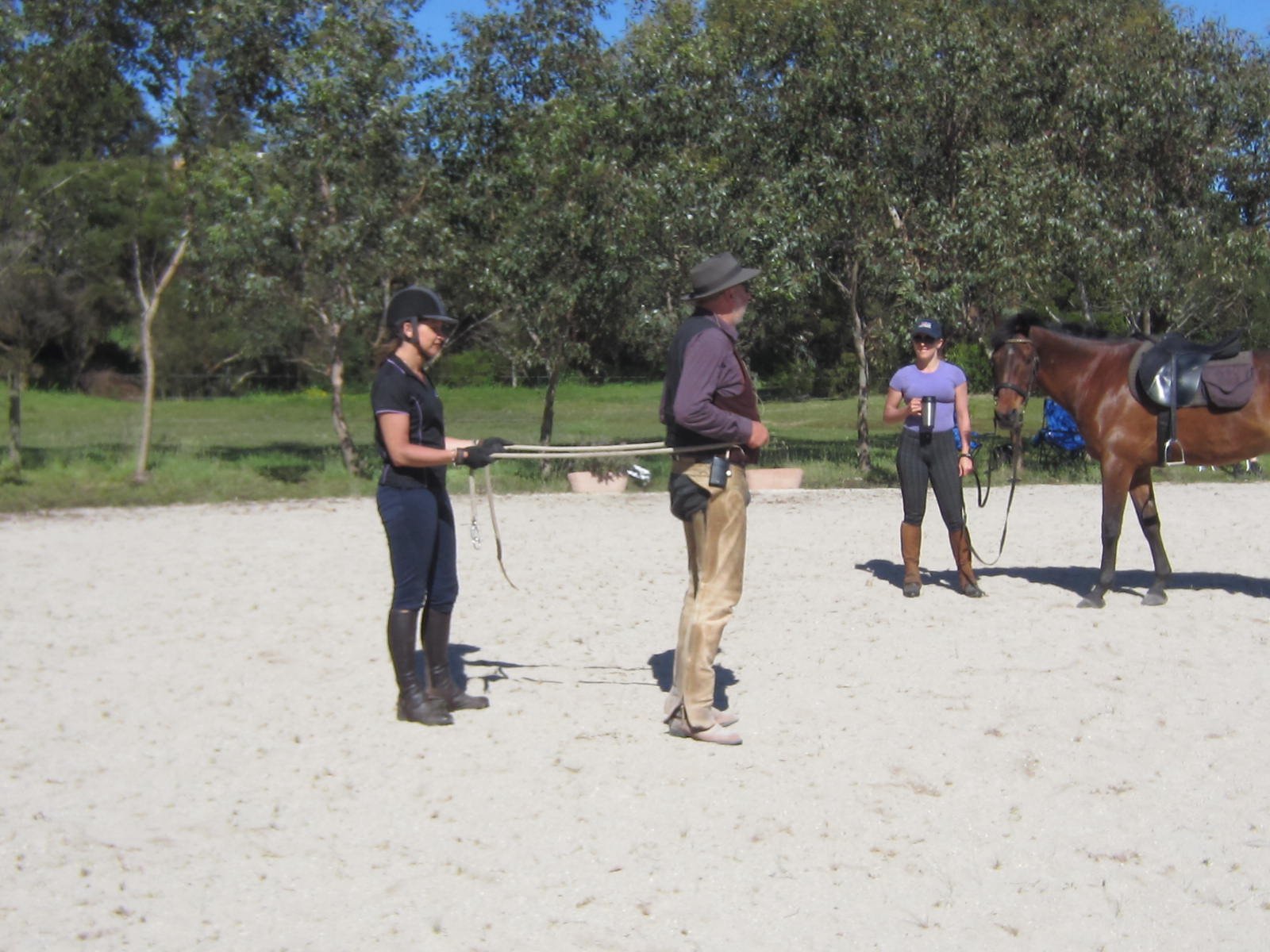We all know that horses learn from the release of pressure. Pressure is applied to motivate a horse to search for a response and when the horse offers the response we want we remove the pressure as a reward to indicate he did the right thing. If we repeat this enough times the horse learns how to respond to the pressure.
We all know this.
If I have said it once I have said it a thousand times that the response we should be looking for and releasing for is a change of thought in the horse. When we ask a horse to do something, it can only learn from this IF it changes its idea from the thing it was doing to the thing we are using the pressure to convince it to do. Without a change of thought, a horse has learned nothing worthwhile.
If we want a horse to turn left when we apply pressure we should only release the pressure when the horse is thinking to the left and not just because it moves to the left. There is no point releasing when the horse moves to the left IF it is still thinking to the right because it will instill resistance and crookedness in the way the horse responds.
We must always wait for a change of thought before releasing the pressure.
If you don’t understand this concept you won’t understand the rest of this essay. So please give it some serious thought.
Let's now talk about the timing of the release.
Most of us are taught that the moment a horse responds in the way you want it to the pressure should be removed. This is to mark the moment the horse did the right thing and it will learn from this what the right thing was. There is a widely held belief that the sooner we release the pressure when a horse offers the right response, the clearer it will be to the horse.
I’m going to ask you to rethink this bit of wisdom.
I don’t believe it is necessarily true that the pressure needs to be released the instant the horse does what we want.
Here is why.
The release of pressure rewards a horse for the thought that occupies its mind at that moment. For instance, if you ask a horse to back up and it moves back while it is thinking to bear down heavily on the rein, releasing the pressure at that time will teach the horse that backing up with resistance is its best option and the right thing to do. Instead of releasing because the horse moved back, we should release because the horse thought back.
But it is even a little more complicated than that.
A horse learns that the idea that occupies its mind at the moment we release the pressure is its most comfortable choice. Therefore, we can release the pressure at any time as long as the idea we want the horse to have is at the forefront of its mind. In other words, we don’t have to release the pressure the instant the horse has a change of thought. We only have to release the pressure while the horse holds onto the thought we want.
For example, if we ask a horse to turn left by applying the left rein and he then thinks to the left as his feet move to the left we have from that moment to however long it is before another thought enters his mind to release for him to associate the release of pressure with thinking and turning to the left.
If the idea to turn left lasts 1/10th of a second, we have a 1/10th of a second to release the pressure. But if it lasts 10 seconds or 10 minutes or 10 weeks we have 10 seconds, or 10 minutes or 10 weeks to release the pressure before we have missed the chance for the horse to learn from the relaxation of the left rein.
As long as we release the pressure within the time the horse has the same thought we want him to have, we are okay with our timing.
There is a reason why I want you to think about this.
It’s because when you are working at releasing the pressure the instant a horse gives to the pressure, it tends to encourage most people to release the pressure abruptly. To avoid being late with their release, most people suddenly drop the feel of the pressure in a flash. This can often surprise a horse and even worry them.
We should never be abrupt or sudden in the way we either apply pressure or release pressure. We should always be working to be smooth to avoid adding another layer of worry to the horse. So realizing that we have as much time to release the pressure as the horse holds onto the new thought we want him to have, takes the need for us to release the pressure abruptly which avoids adding more anxiety and thereby helps the horse associate the release of pressure with the thought we want it to have.
At a clinic teaching about the timing of the release of the reins.

